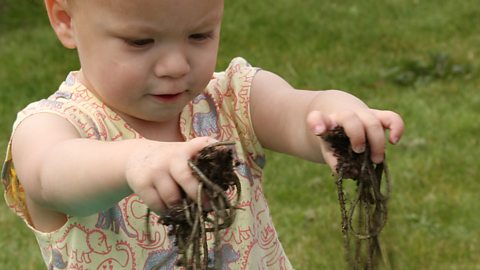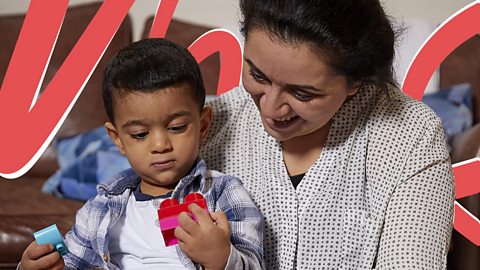Encouraging kids to use scissors or climb trees might sound scary to some parents.
But it could help with their development, according to Gaynor Rice, early years professional and co-writer of We’re OK With Risky Play!.

What is risky play?
Gaynor defines 'risky play' as activities that could contain an element of risk for children, which is managed by adults: using sharp tools, physical challenges such as climbing or sports or even the 'emotional risks' of new social situations such as starting nursery or toddler groups and meeting new people.
“The idea is that risky play is a necessary part of children’s development,” says Gaynor.
Kids are highly capable of understanding challenge and they need it, it’s part of their cognitive development.
“With risky play, we can thread risk and challenge into children’s lives in a safe way. The things that they get from that include confidence, independence, resilience and problem-solving skills.”
She adds that risk is subjective.
“What I class as a risk might be quite different from what someone else classes as one,” says Gaynor. “I’m no daredevil; I wouldn’t go on a parachute jump, but some people would consider doing that.”
It’s no different with children – one child’s risk is another’s everyday play. But it’s worth exploring play that your child finds risky or challenging, even if they sometimes make mistakes. “It teaches them that when they don’t get things right, they have to persevere and be resilient and not give up,” Gaynor adds.
Risky play at home
Gaynor says that assessing risk starts at an early age. “Babies are natural explorers. A baby will start to crawl and take risks. They’ll start to pull themselves up on furniture when they can’t really stand yet.”
Once they get a little older, they can be introduced to a whole range of new exciting activities.
“A couple of examples could be working with children and teaching them to use knives to cut up vegetables for cooking, or using vegetable peelers to whittle and clean sticks so that we can light a fire and toast marshmallows,” says Gaynor. Other activities could be baking together, or going outside and exploring green spaces.
She adds: “It’s about respecting their abilities to use real tools and equipment, handling situations that we’ve grown to associate more with adulthood.” Gaynor advises taking time to explain any new tools or activities, as clearly as possible, as well the potential risks.
“Basic tools we take for granted like scissors, staplers and hole punches can be boring to adults, but to children they can be fascinating,” she says.
“They hold that level of excitement and thrill.”
Slowly introducing these objects with a set goal (learning to safely cut paper for instance) can help kids learn new skills.
“I believe that risk and challenge benefits children,” says Gaynor.

Another aspect of risky play is learning to respond to a child’s curiosity in a positive way.
“It’s standing there while a child says: ‘I want to climb that tree’, and saying ‘Do you think you can? Should we maybe try the first bit? I’m here if you need a hand.’ It’s about trying to avoid bringing our own anxiety into the situation.”
Mum-of-three Katie Parkin says her children experienced risky play while at pre-school, and have seen a lot of benefits as they grow older. “I am one of those parents who does a mental risk assessment every time I walk into a room,” she says.
She adds: “I would like to think that learning through play has perhaps given my kids the confidence to do things themselves and not need an adult to supervise them all the time.”
Games and sports
Katie says her youngest, aged 8, has just started doing gymnastics via Zoom.
“They’re doing things like forward rolls at the moment. It’s a bit nerve-wracking because you have to make sure they’re tucking their heads in properly and every movement is safe.”
She adds: “Whatever it is they’re learning, you show them how to do it, step away and let them practise.
“It’s so important to give them independence.”
Gaynor adds that sport can help kids develop resilience.
“Sport, particularly at a team level, carries with it an element of competition and therefore the risk of losing,” says Gaynor.
She believes that this can play a “vital role in the development of both confidence and resilience.”
Getting started with your child
Get out there
“Look at what’s around you and follow your child’s lead,” suggests Gaynor. “A lot of children like to go out in green spaces.”
If you have access to gardens or parks, you could let them make mudpies or play in sandpits.
Fun at home
If you don’t live near green space, think about fun things you can do at home. Playing with water, helping with dusting and housework, cooking together, arts and crafts are all great places to start.

Boundaries
“It’s important to have boundaries,” says Gaynor. “You need them to know that they can’t use tools without their parent, carer or grandparents there.”
Positive feedback
A child loves to feel involved and know that an adult is proud of them. “Make sure you use encouraging language,” says Gaynor, which will help them understand that they’ve achieved something important.
A key part of risky play is managing risks as a supervising adult – while you may encourage your child to take risks under your supervision, it’s important not to encourage dangerous behaviour. Always keep a close eye on young children as they play to avoid harm.






